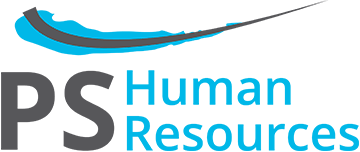Finding, recruiting and retaining top talent is crucial for any successful business and the current shortage of candidates for an increased number of live vacancies in the UK is something we all need to think about.
In Part 1 of our Better Employee Engagement blog series, we suggested ideas for improving talent acquisition, ‘How HR can help your business to attract candidates’. Here, in Part 2 of the series, we look at the benefits of establishing a strong onboarding process as a means to improve employee retention and engagement. This is an important and effective strategy that requires your human resources function to work closely with people managers as well as other departments to build a simple, yet effective onboarding experience.
Why plan a strong onboarding process?
Onboarding refers to the same process of settling new employees into a company and their role, as ‘induction’ and ‘orientation’. The reason for establishing a strong onboarding process is to ensure that all the relevant stakeholders are involved with a new employee’s welcome to the workplace. It helps new recruits to fit in, to know where to find things and how to source information as well as an introduction to their team and colleagues. It is important to make the early stages of employment enjoyable and as positive as possible to avoid untimely departures, which means having to go through the recruitment process again, at a cost of both time and money.
What should be included when onboarding a new employee?
There is no real formula for getting this process right, but it is worth thinking about what you would appreciate if you were part of an onboarding programme. How long should it last and who should be responsible for making sure it is running effectively? This could be HR or the line manager but would involve other colleagues too so that the employee can feel comfortable and get a good flavour of the work they will be doing and who they would need to collaborate with.
Think about this process prior to the new employee starting – how long should the onboarding process take? This will depend on the length of time the employee is contracted for. If it’s a short, fixed-term contract then the onboarding process needn’t take as long as it would for a permanent employee, which would tend to take up to 3 months and run alongside a probationary period (more of that later).
More often than not, a new employee will have to work their notice period for their previous employer, so keep in touch with them throughout this process with HR’s support. This will have the benefit of making them feel included, but don’t overdo it as this could have a negative effect.
Make sure that the start date works; all the relevant people will need to be available on the new recruits’ first day and ensure that these stakeholders are aware of what they need to be doing. Plenty of time should be allocated so that the experience does not feel like an inconvenience.
Break the process down into a timetable and think about what a new employee would need on day one – orientation of the building, knowing where the kitchen and bathrooms are as well as the necessary H&S information is a good start.
Don’t forget, starting a new role can be daunting and can amount to information overload, so be mindful of this when developing the timetable. People Management has some helpful insights as well as anecdotal information of real-life experiences in this article: https://www.peoplemanagement.co.uk/long-reads/articles/how-get-onboarding-right
Other elements to consider including in the programme are:
- A welcome pack/goody bag is given to the new employee
- A buddy is assigned for the 3-month period to be the first contact for any queries
- Team lunches are organised
- The probationary period and process is explained, and probationary reviews set
- Company handbook and policies are available for reading/review
- Introductions to key staff are made
- Introductions to clients/suppliers are made
- IT orientation
- Introduction to the company culture and expectations communicated
Probationary period and review
A big part of the onboarding process is to have an effective probationary process and regular reviews. Generally, probationary periods last for 3 months, although here at Team PSHR we have seen a change, with our clients increasing the probationary period to six months as it gives all parties the opportunity to test whether the new recruit can do the job.
Having a comprehensive probationary policy and process, which is communicated to new recruits and understood by line managers, is key in making sure this process works. This means that HR would support line managers by writing guidance and delivering training as to how to manage the probationary period.
On day one, line managers should be scheduling the probationary reviews; we recommend these take place at month 1, month 3 and then a final probationary review at 6 months to see whether this has been successful. If there are issues which arise in between these times, then additional reviews can take place with clear communications as to what is needed to improve, included and agreed – it is important to tackle these issues at the time to avoid further performance issues later. Line managers should document these meetings and store on the employee’s HR file. Having an audit trail will enable managers to determine how successful the probationary period has been. Consider using an online tool like BreatheHR which serves as a useful, time-saving people management tool and lets you track employee performance to help stay on target.
It does help to have effective job descriptions in place with not only the task information included, but accountabilities and behaviours detailed too (think of the company values and culture and how these can be incorporated).
During the probationary process, line managers should be committed to supporting the new employee by being available and delivering effective on-the-job training and the new employee needs to be willing to learn and ask questions. For more guidance on this, Personnel Today suggest some probationary top tips you can read here.
A recent Forbes article states that new executives tend to make a decision whether to stay in a role or leave within the first 90 days, so effective onboarding is a must.
At the end of the probationary period, the line manager (with HR support as and when needed), should be able to make a decision to either:
- Pass the probationary period – the employee becomes a permanent member of the team
- Extend the probationary period – if there are any areas which still need developing
- Dismiss the employee – you will need essential HR advice here to ensure employment law compliance is adhered to.
All of the above should be communicated to the new employee face to face at a meeting and followed up in writing. Don’t forget, the notice period during probation is often much shorter, usually a week in total. If an employee successfully passes the probationary period, the notice period would increase, so make sure you are following process as to who needs to know this information so that payroll, pension providers, medical health providers and HR records can be updated.
Training and development and career planning
It is important for an employee to feel that they have room to improve their career; it will make them feel motivated. With clear and achievable targets, employees will be more motivated to fulfil them – especially if there is a clear plan to track progress. It is worth involving the employee on where they feel their skills gaps are and areas which they would like training on.
This process can start during probation and should continue throughout the employee life cycle. Employees who have a commitment to learning and development shows employers that they wish to grow with the company, and this is something to support where possible. Managers should discuss career aspirations and professional development opportunities with their employees during regular reviews/appraisals to see how they can support them with moving towards these goals within the company. Investing in employees helps companies to reduce employee turnover and retain their talent so that they can plan more effectively for the future.
Establishing your onboarding strategy is essential but for many SME’s, developing these systems and practices can be tricky, so let PSHR help. Use our talent and recruitment service to assist you in creating job descriptions, person specifications and placing job advertisements through to interviewing and guiding new employees during their onboarding period.
We offer bespoke HR resources, advice and guidance to help your business succeed. Contact #TeamPSHR on 01473 653000 or email hello@pshumanresources.co.uk to arrange a FREE 30 minute HR consultation.





